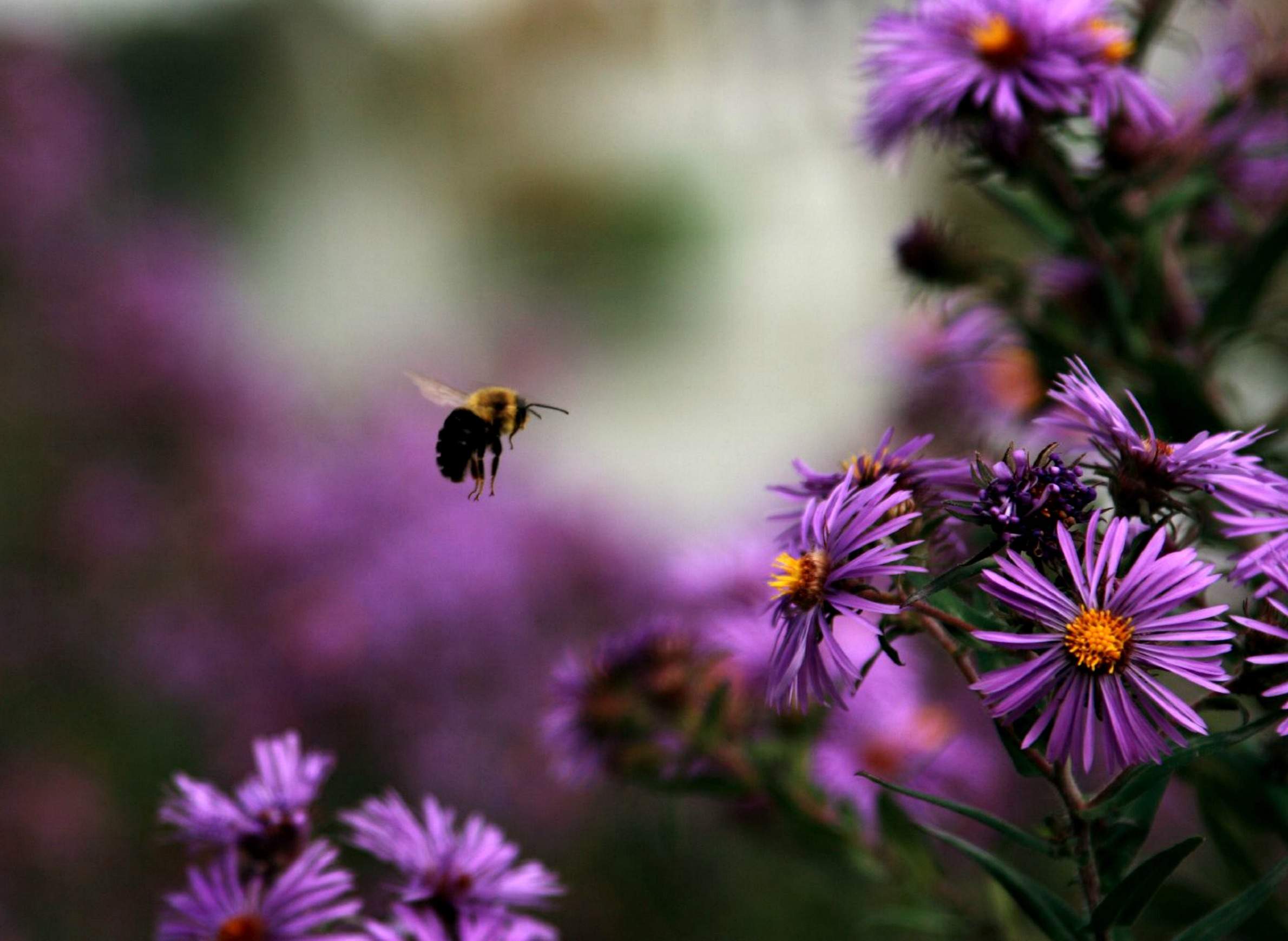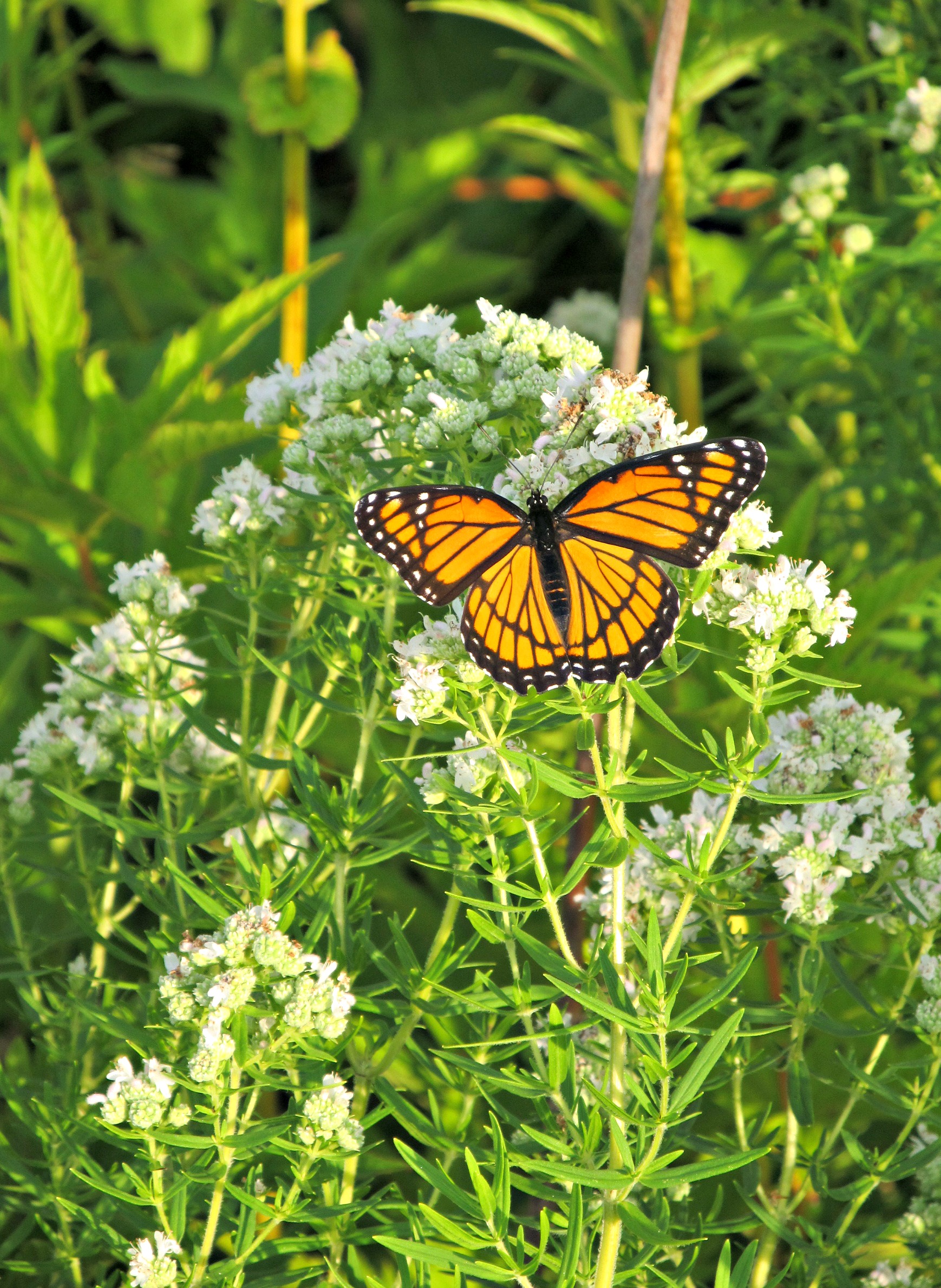
7 Actions To Help Insect Pollinators Help People

Pollinating insects play a key role in seed production for many flowering plants around the world. Nearly $15 billion worth of food crops in the U.S. depend on bees, flies, butterflies, moths, wasps, beetles and other pollinators.
Unfortunately, the populations of many pollinating insects have sharply declined over the past few decades, imperiling the commercial cultivation of common fruit, vegetable and nut crops like almonds, apples, oranges, cherries, blueberries, pumpkins, gourds, zucchini, cantaloupe, macadamia, cashews, strawberries and cocoa. All benefit from insect pollination.
Research has found four bumblebee species are close to extinction, facing the habitat loss and fragmentation of existing nesting and foraging grounds that threaten many pollinators. Diseases, parasites, agricultural practices, pesticides and abnormal weather conditions are all leading factors in the decline of beneficial insect populations.
However, there are many steps an individual can take in backyards and around communities that can help revive pollinating insect populations, including conservation and promotion of healthy habitats.
- Planting diverse native plant species that bloom in different seasons will attract pollinators. A wide variety of floral colors, planted in groups of single colors, will capture pollinators' attention. Bees are attracted to white, blue, yellow and purple flowers, and butterflies like those that are orange, red, yellow and purple. Simple, pollen-rich flower cultivars native to the appropriate ecoregion are preferable to hybridized flowers with double petals that may lack in pollen.
- Leaving a few patches of bare ground in an isolated part of a landscaped area can provide a nesting habitat for solitary bees that prefer open, sandy areas. Minimizing tilling and foot traffic in isolated areas will protect ground dwelling bees.
- Native bees also nest in rock walls, tree stumps and leaf debris, but constructed or purchased artificial bee nesting structures provide a controlled alternative. Artificial nesting structures should be disinfected or replaced every two years to prevent disease.
- Seeding a few patches of buckwheat or clover in a vegetable garden will attract bees.
- Bees are highly sensitive to any contact pesticides and their residues, so insecticides should not be used during the blooming period. Appropriate pesticides should be used as a last resort, applied in accordance to label directions, and gardeners are encouraged to integrate a wide range of cultural and mechanical practices to control garden pests.
- Granular formulated insecticides are preferable to sprays. Additionally, blooming weeds should be mown down before using insecticides, and lawns should be watered immediately after application.
- Citizen science projects like Bumble Bee Watch, the Great Sunflower Project and Monarch Watch are great ways to get involved and spread the word about pollinators.
More information about protecting insect pollinators and their habitats is available in University of Wisconsin-Extension guides about native bees and turfgrass landscapes.
Vijai Pandian is a horticultural agent and educator for the University of Wisconsin-Extension Brown County. This article is adapted from an item originally published by the Green Bay Press Gazette.



